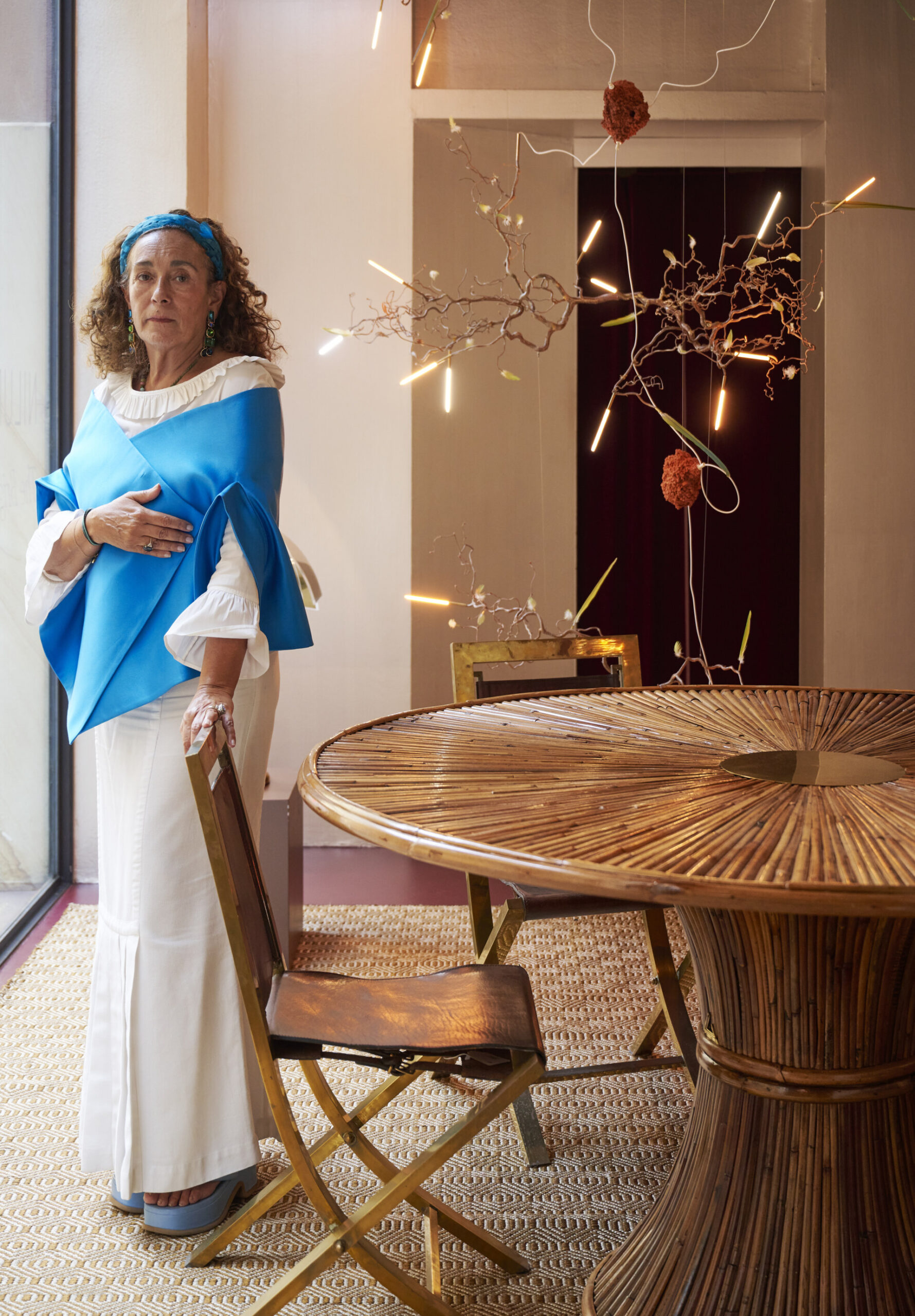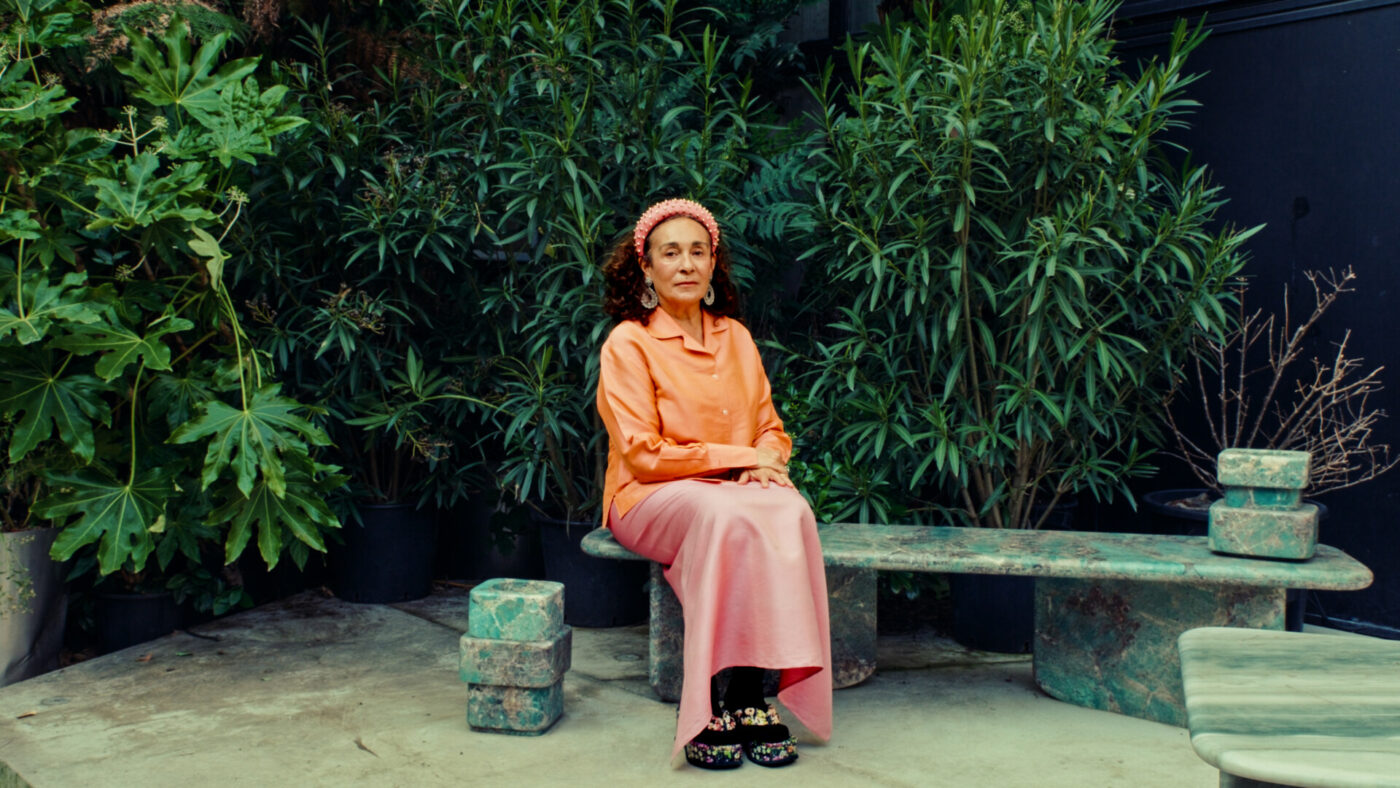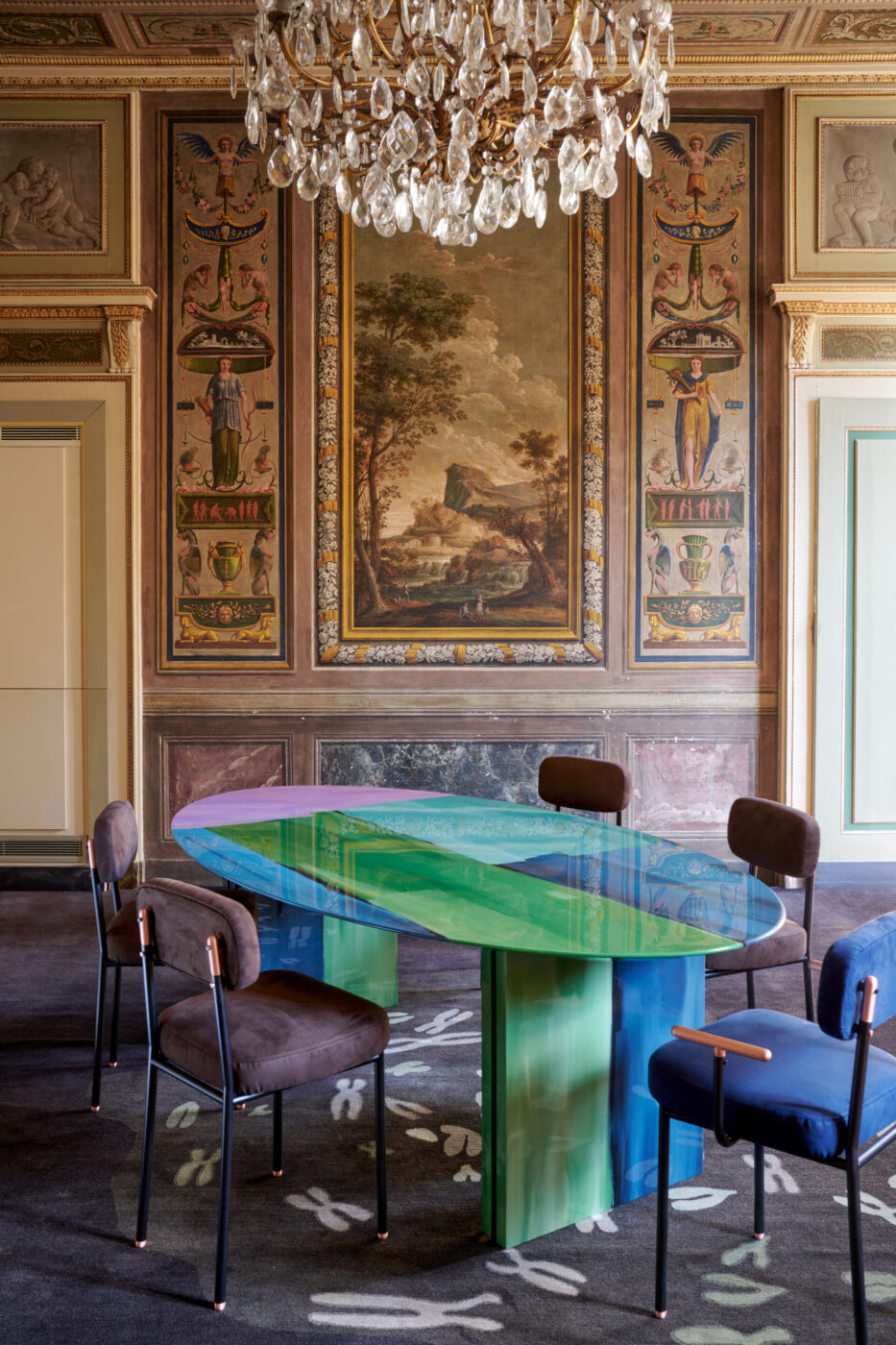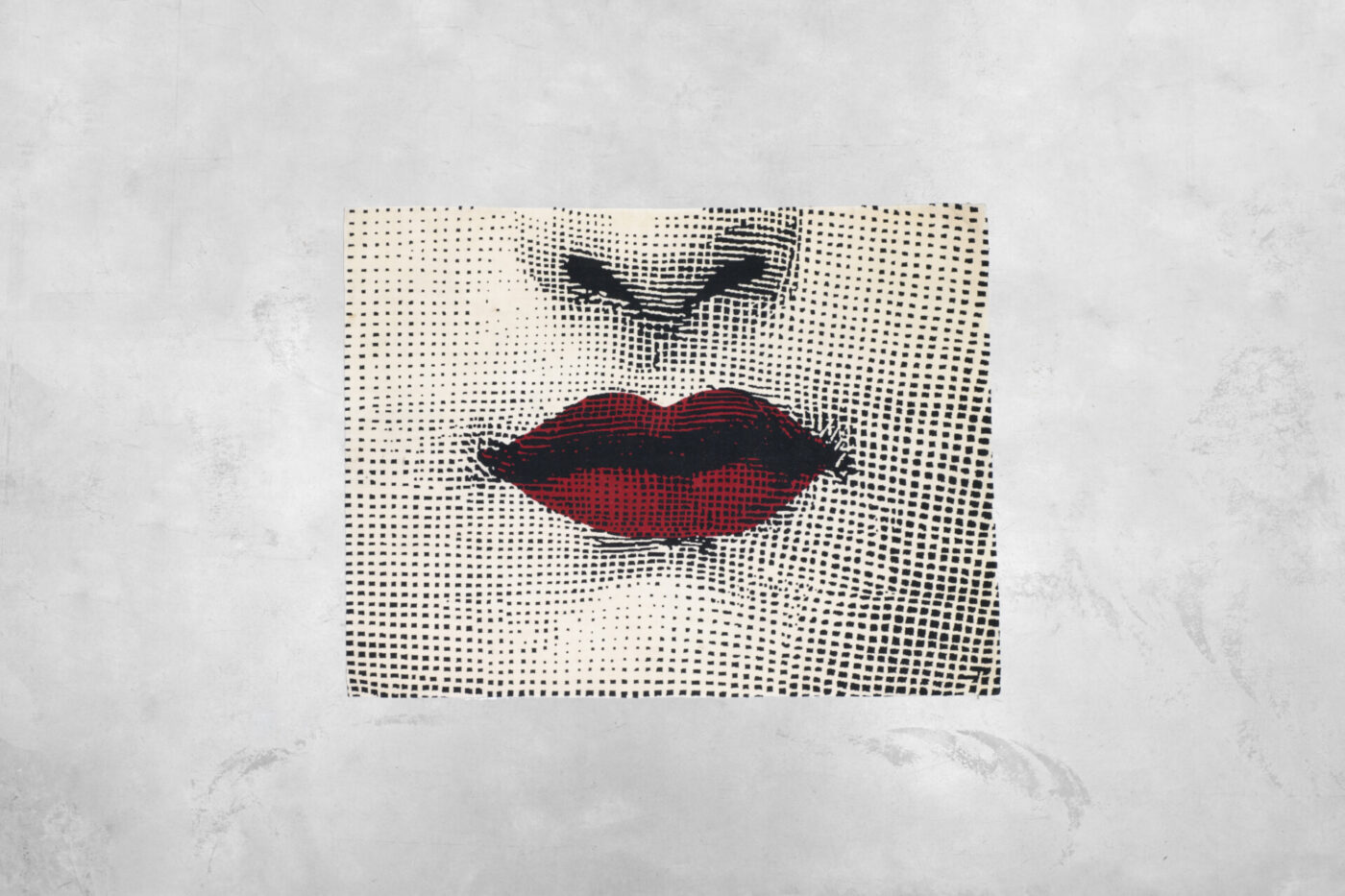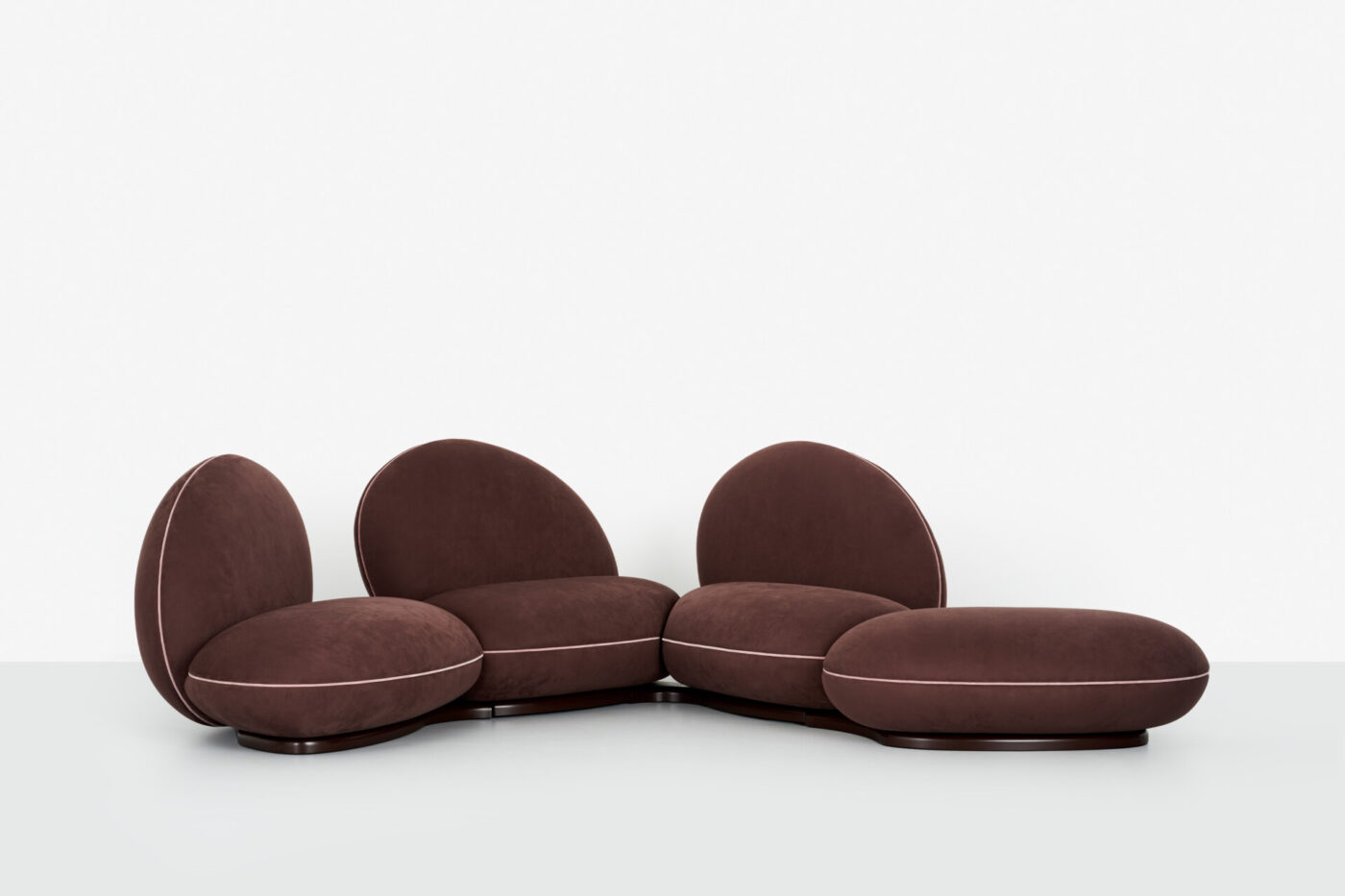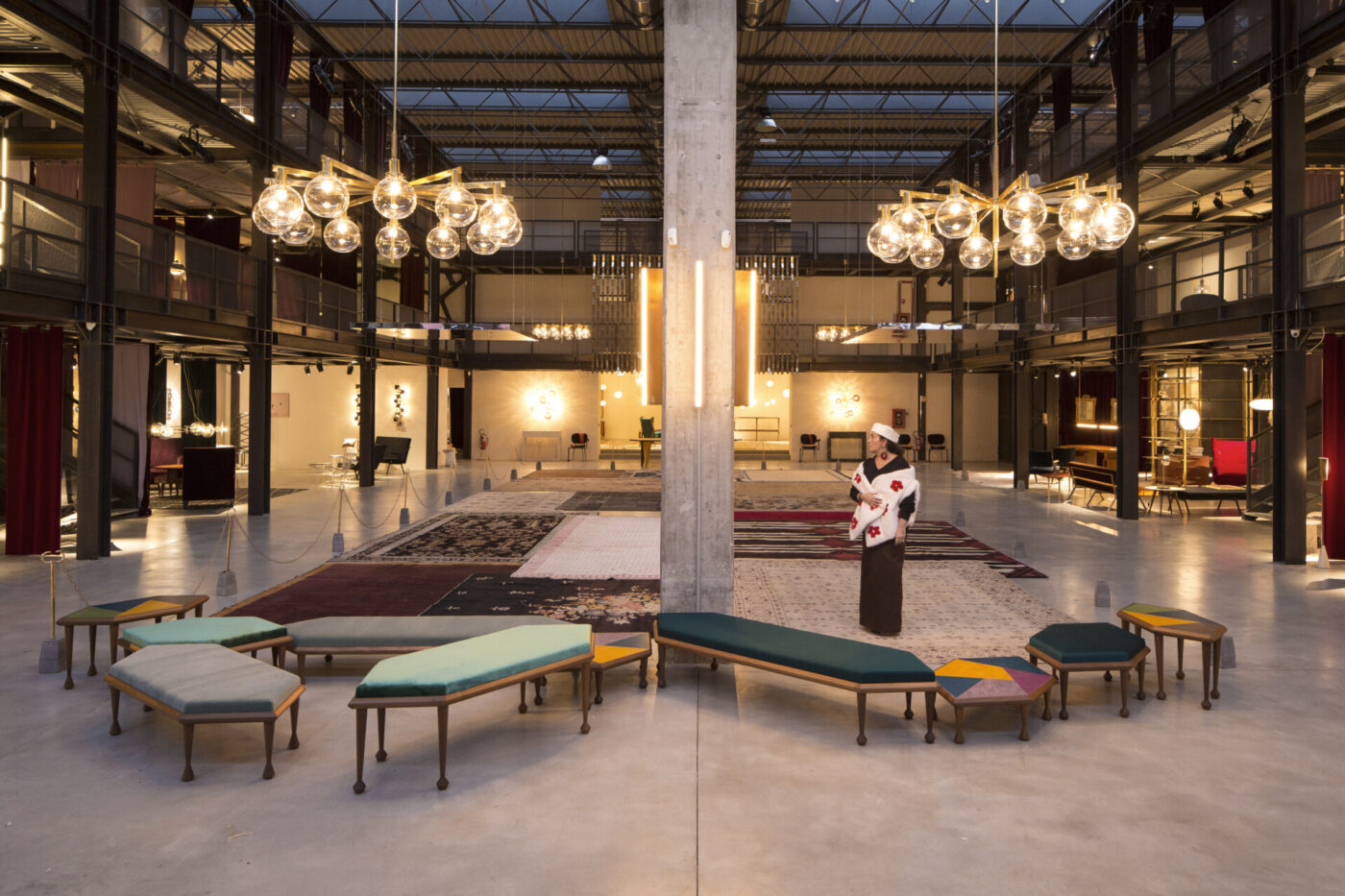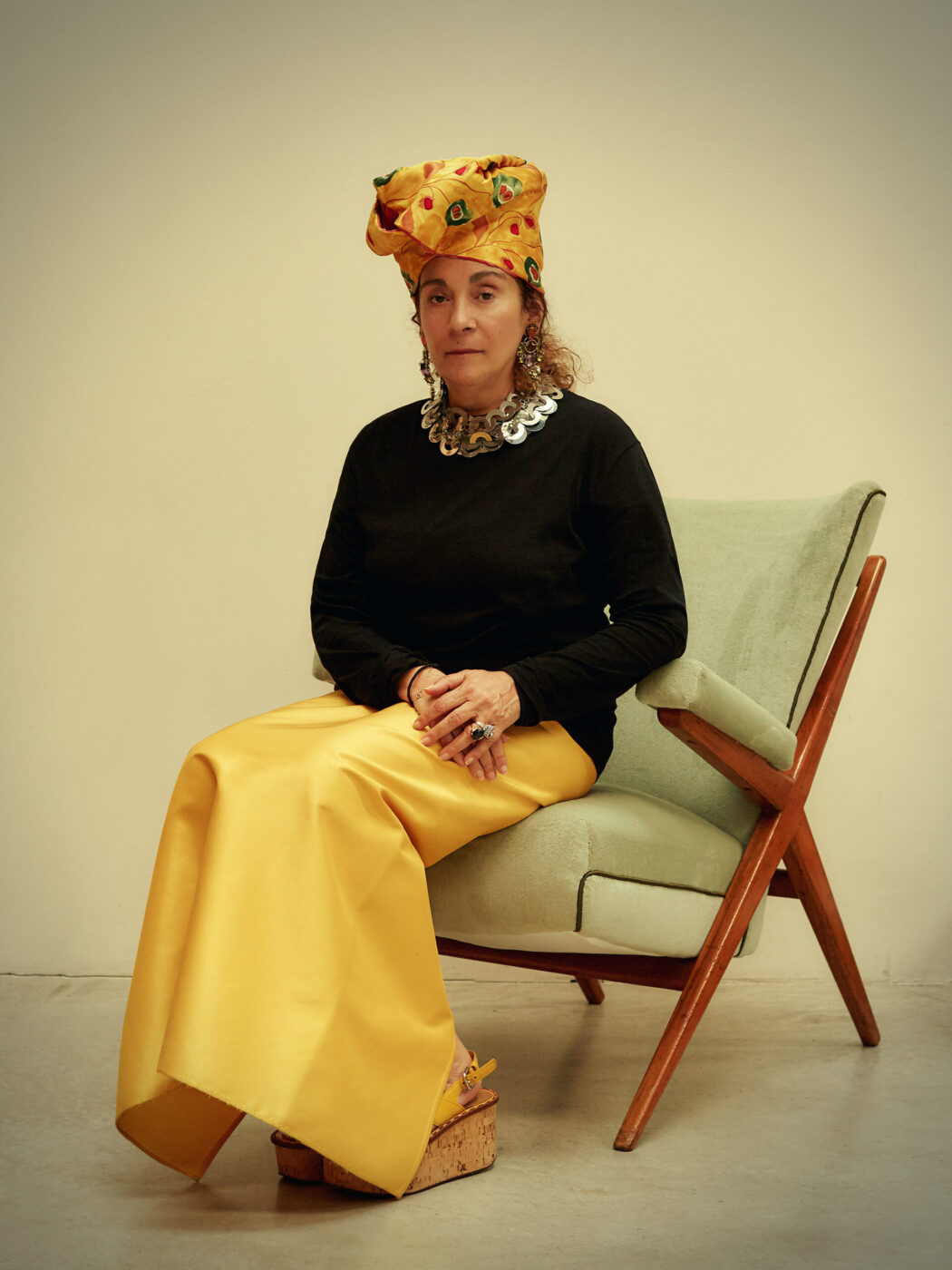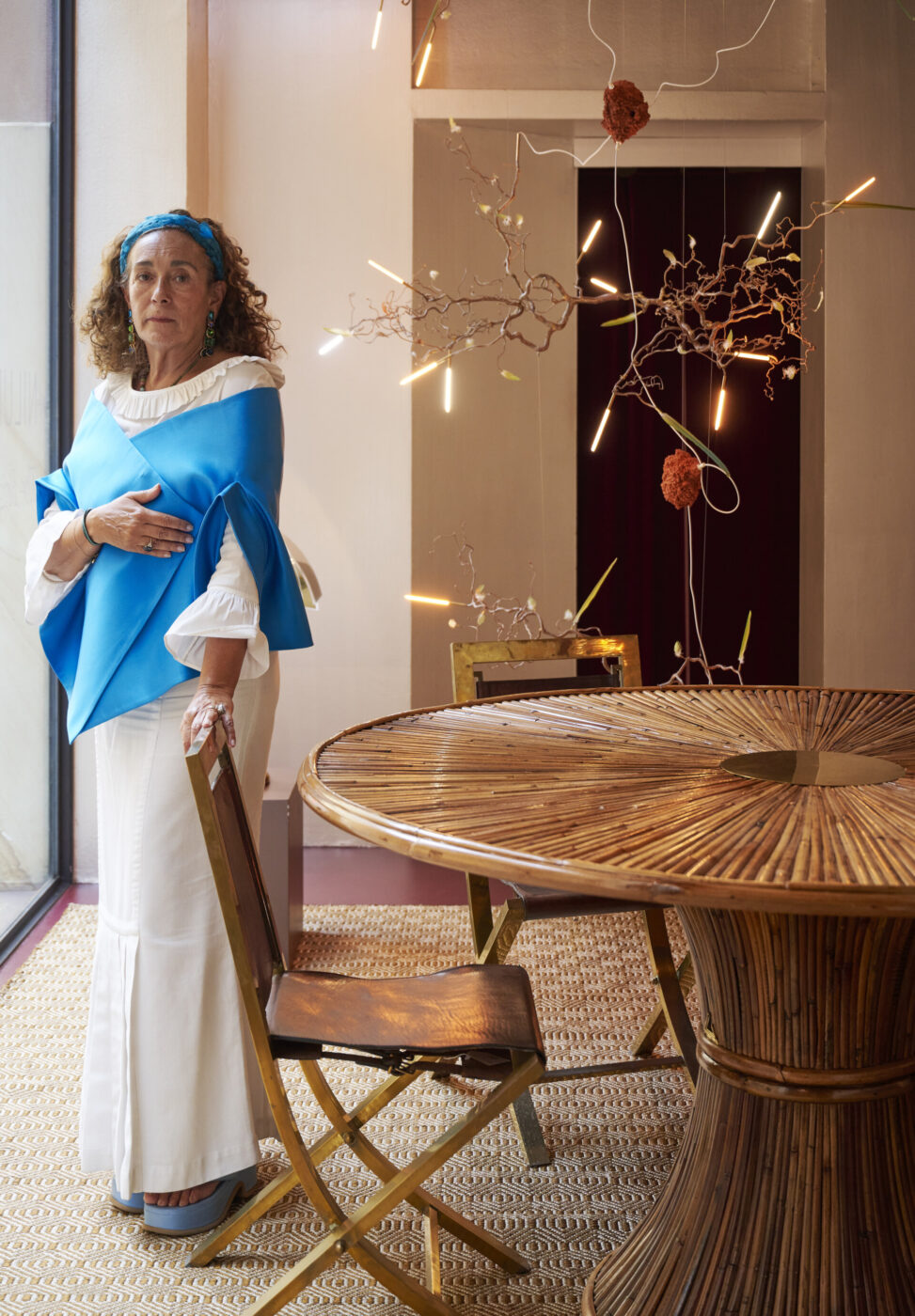Once there was a rug–a Scandinavian carpet to be exact. It had an abstract pattern, intricate handwork, and maybe even a bit of magic. Nina Yashar had never seen anything like it before. “It carried a quiet poetry that deeply resonated with me,” she recalls. “In that moment, I realized that design could transcend its physical function, becoming a vessel for emotion and meaning.”
The Tehran-born gallerist, collector, patron, and international tastemaker had been primarily dealing in 19th-century French carpets and textiles until the late ‘90s. This discovery, however, marked a turning point in Yashar’s career, who has called Milan home since she was young. She turned her attention to historical and contemporary design objects created by some of the industry’s most celebrated talents. Founded in 1979, Nilufar Gallery might have started as a collectable design gallery in Milan, but it has evolved into a universe on its own, immersing one in a metaphorical voyage through decades, styles, and innovations; from a rare hand-painted late 19th-century cabinet to 3D-printed bookshelves that look like cosmic creatures from another galaxy. Yashar believes that every design object is a carrier of memory, identity, and expression; bearing a narrative that connects it to its creator, and ultimately, to its owner.
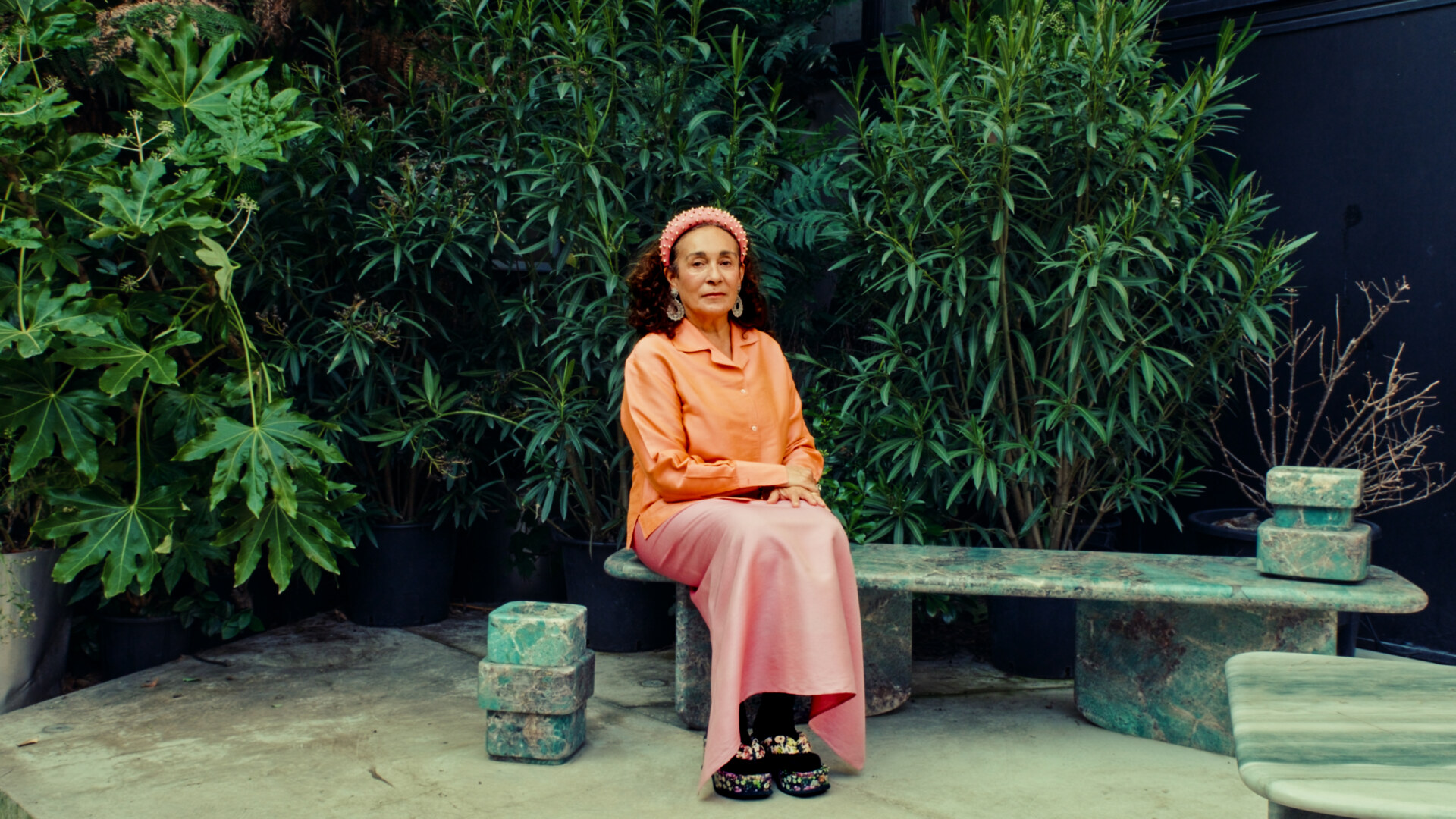
Nina Yashar; Photo by Marcrello Maranzan
Perhaps this explains why clients form such strong emotional connections to the pieces they acquire from Nilufar, and why they come from far and wide to find them. Nilufar Gallery in Via della Spiga is a European design destination that needs no introduction; a portal to escapism where all kinds of visual curiosities meld in expertly curated furniture showcases, art exhibitions, and design presentations throughout the year. Located in Milan’s Quadrilatero della Moda (Fashion Quadrilateral), the two-floor Nilufar Gallery is always high on the Salone del Mobile “must-see” list each year and has hosted a long list of exhibitions celebrating design luminaries like India Mahdavi, Gaetano Pesce, Pietro Consarga, and Gabriella Crespi, to name a few. But it’s not just the surface-level aesthetics of Nilufar’s treasures that make them, and the gallery, so captivating. Yashar’s selections—whether iconic pieces from Gio Ponti or Ettore Sottsass, or contemporary works by designers and studios like Maximilian Marchesani and OLDER—are testaments to culture and universal creativity, and perhaps most importantly, they carry the spirit of their creators, many of whom Yashar knows (or knew) personally.
People, Yashar says, don’t just acquire design objects, they project themselves onto them. “A bold, sculptural chair might speak to someone’s adventurous spirit, while a refined vintage table might evoke nostalgia or a connection to their cultural roots,” she explains. “Objects become mirrors, reflecting and amplifying the identity of their owners.” There’s an emotional psychology to it all, and Yashar has a deeply intuitive understanding of it.
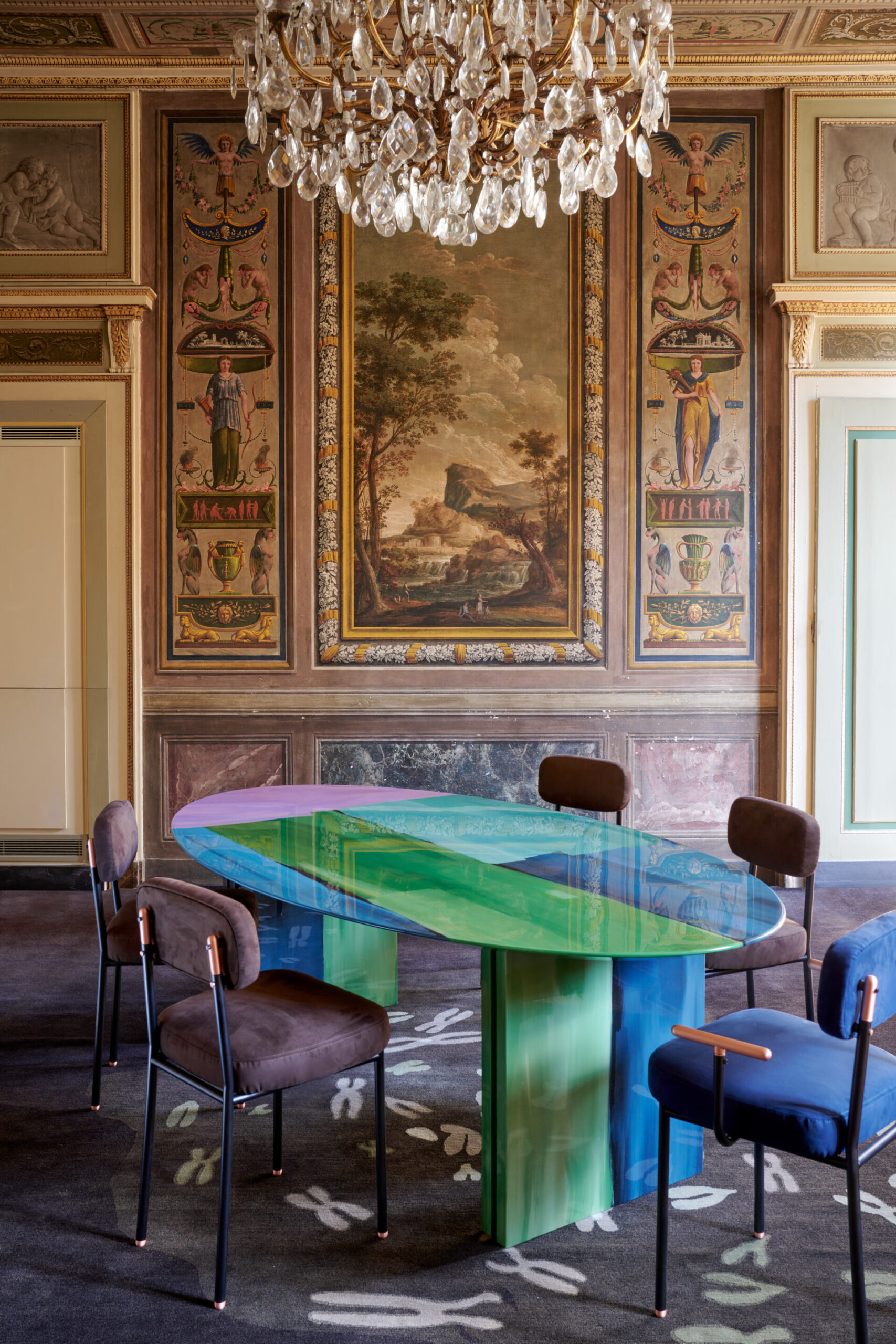
Nilufar Gallery; Photo by Filippo Pincolini
It’s easy to walk right past Nilufar Depot, Yashar’s secondary location, on your first visit to Viale Vincenzo Lancetti. With its understated exterior and position set back off the street, this former silverware factory in Milan’s north-eastern Derganino area was transformed by Yashar into a grand warehouse-showroom-exhibition space in 2015 (that means a giant torta for its ten-year anniversary this year!). Designed by architect Massimilano Locatello, the three-level depot was inspired by the layout of Teatro alla Scala, but instead of sopranos and baritones that give you goosebumps, design objects with “soul” are the stars of this show. Curated according to designers, ideas, and thematic stories, Nilufar Depot feels rather like a theatrical “tableaux” or an epic operatic set. From Carlo Scarpa’s “Cornaro” sofa to “Mod” wall lamps by Franco Albini and a “Desk of briefcases” by Maarten de Ceulaer, every design object in Yashar’s collection brings the space to life with a healthy dose of personality. It’s a place where it’s perfectly acceptable (at least one hopes) to fantasize about being Cleopatra reclining on a Federico Munari cotton velvet sofa, or a Fellini-esque femme fatale curled up in the lips of a Barnaba Fornasetti “Il Bacio” carpet.
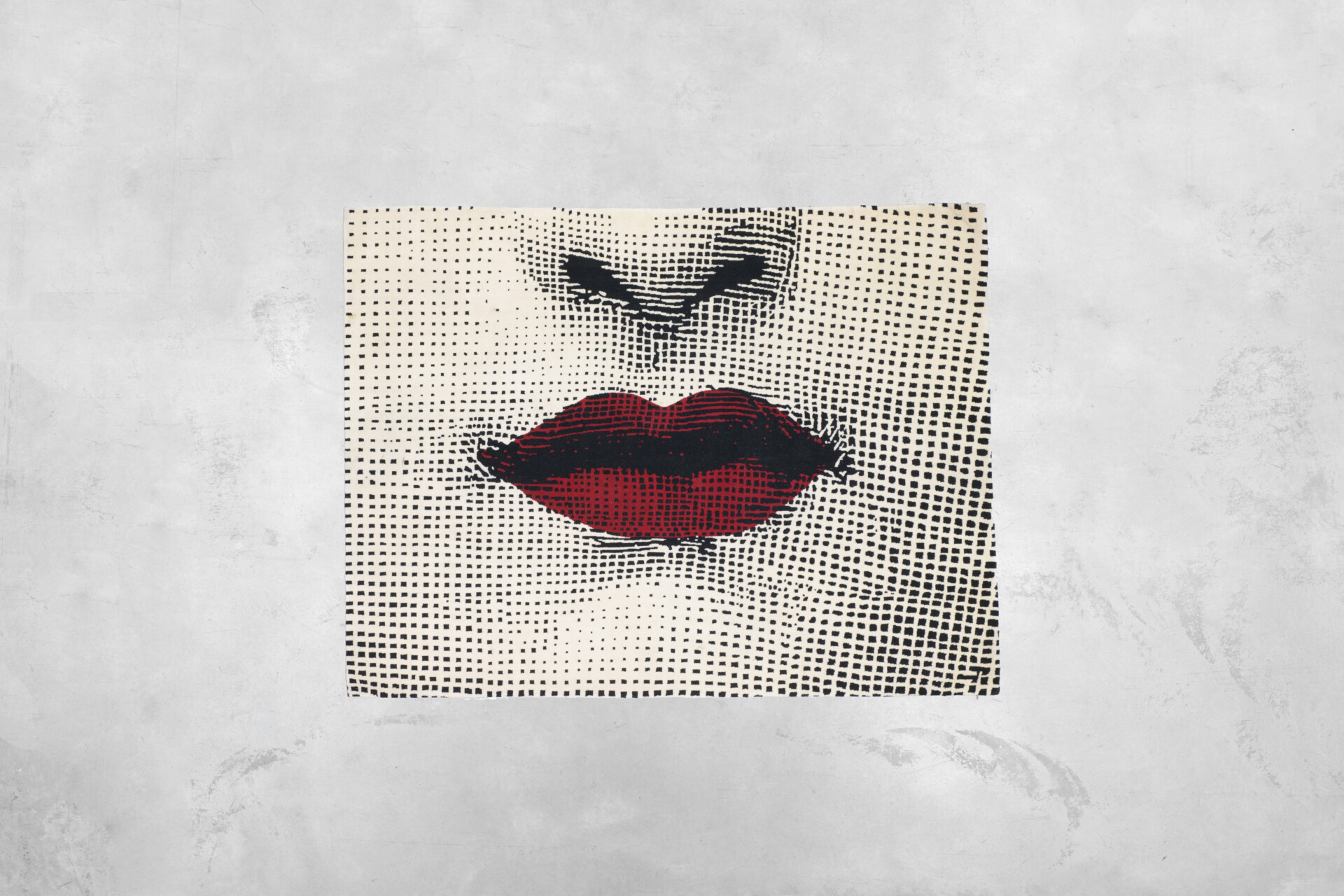
"Il Bacio" by Barnaba Fonasetti; Photo by Matteo Bartoli
What does it mean to be a “tastemaker” in a city like Milan that’s full of, shall we say, “tastemakers”? It means being Nina Yashar; a woman with a bold sense of intuition who knows when something “speaks” to her beyond an aesthetic level. A true tastemaker likely never considers themselves a “tastemaker”, and one gets this impression with Yashar. It all seems effortless to her, even defining her signature style, also expressed via her exuberant outfits and head-turning accessories. She sums it up in a sentence: “An eclectic fusion of historical tradition and unexpected contemporary elements, where contrasting styles converge in a harmonious dialogue.” The Nilufar universe, therefore, is Yahsar’s universe. Walking into Nilufar Gallery or Nilufar Depot feels like walking into Yashar’s own lounge or living room, and one can only imagine the deep attachments she has formed to certain pieces over the years. Among them, a BBPR library—“I think it’s just a perfect furniture element,” she says simply—and Martino Gamper’s “Gio Ponti Translated” series, in which Gamper reinterprets Ponti’s designs from the 1960s Hotel Parco dei Principi in Sorrento. “It’s a design project between past and present, symbolizing one of the challenges for designers today,” Yashar notes.
Could Nilufar have existed, as we know it, in any other city in the world? Yashar doesn’t hesitate. “Nilufar is deeply connected to Milan,” she says. “Italy, and Milan in particular, has greatly enriched the gallery’s growth, offering a vibrant, design-focused community and an unparalleled cultural heritage.” Milan, she believes, is a city where tradition and modernity exist in a perfect balance. Case in point, Salone del Mobile, when the city becomes a mecca for the world’s leading designers, collectors, and curators.
“Each year, the city transforms into a dynamic hub of creativity, with a constant flow of ideas and people,” Yashar says. “Milan Design Week not only broadens our knowledge but also allows us to share fresh visual narratives, influencing and inspiring the global design community.” This blend of heritage and innovation, Yashar notes, is what it truly means to be Milanese. “It means being open to the world while cherishing local culture and craftsmanship. It’s sophistication, innovation, and a strong sense of identity all at once.” This ethos is reflected in Italy’s contribution to the global collectable design sphere, which Yashar describes as “unmatched”.
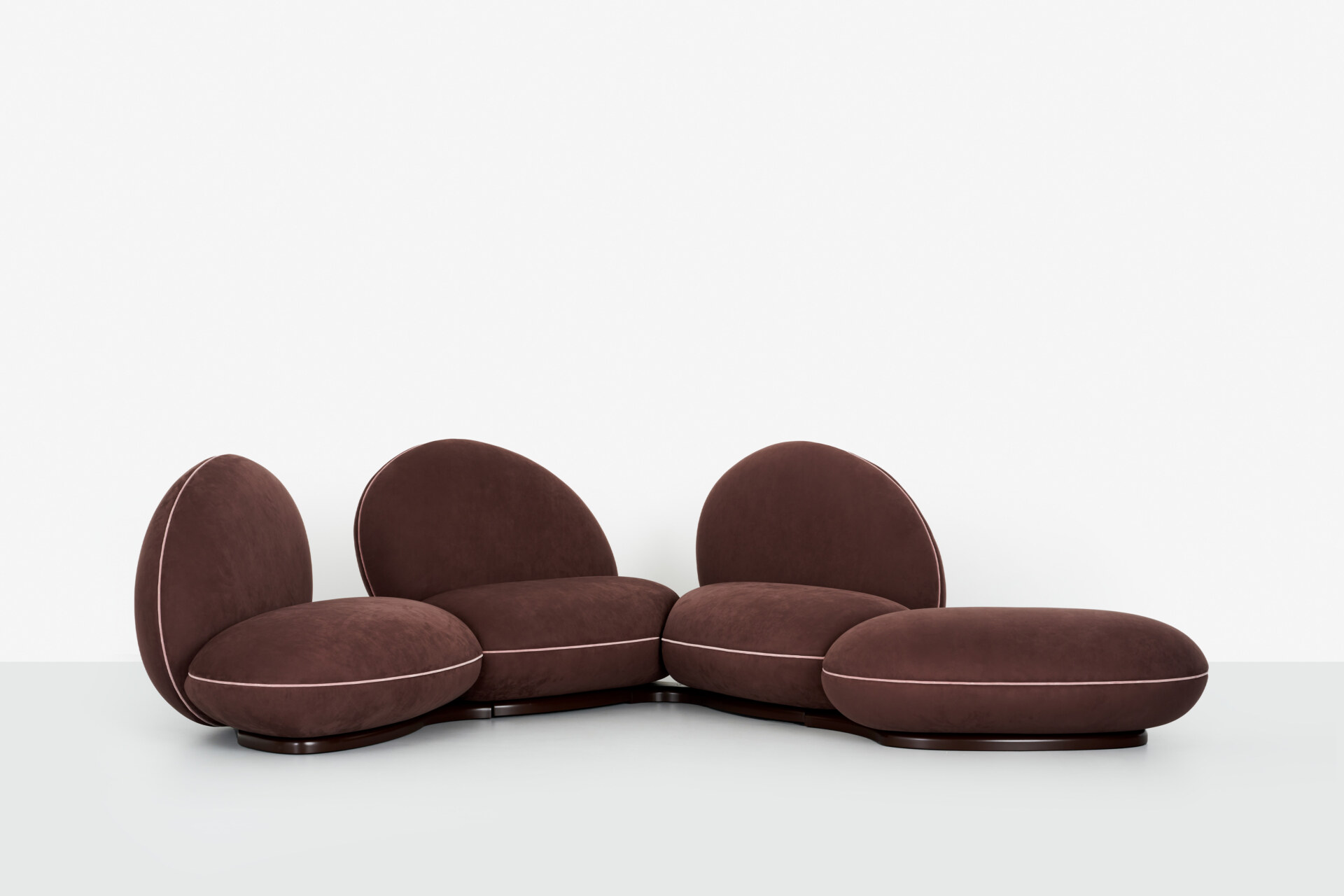
Macaron Sofa; Photo by Filippo Pincolini
Nilufar is a constantly evolving “opera”. Over the years, Yashar has continuously expanded its scope and reach, celebrating the work of new designers, discovering emerging talent, and creating thought-provoking contexts for design to be experienced. Among Nilufar’s latest ventures is the “Nilufar Editions”, a collection of furniture designed by international talents with Yashar’s curatorial input, produced in non-limited pieces and distributed through select retailers worldwide. These include the playful “Macaron Sofa” in chocolate and pink designed by Gal Gaon and the stylish cylindrical “Supersonic” low table in stainless steel by Architude. Nilufar Editions is a bold move for a gallery that built its legacy on one-of-a-kind collectable design, but Yashar sees it as a natural evolution. “We’re expanding the narrative, making great design more accessible while maintaining the integrity and vision of Nilufar.” When it comes to discovering new designers and collectives such as Andrea Mancuso, Marco Lavit, and Francesco Faccin, Yashar follows her instinct. “It’s a profoundly personal process,” she says. “I’m inspired by those who push boundaries, defy conventions, and bring passion and authenticity to their work. Whether they are established figures or rising stars, what truly matters is their dedication to craftsmanship and innovation.”
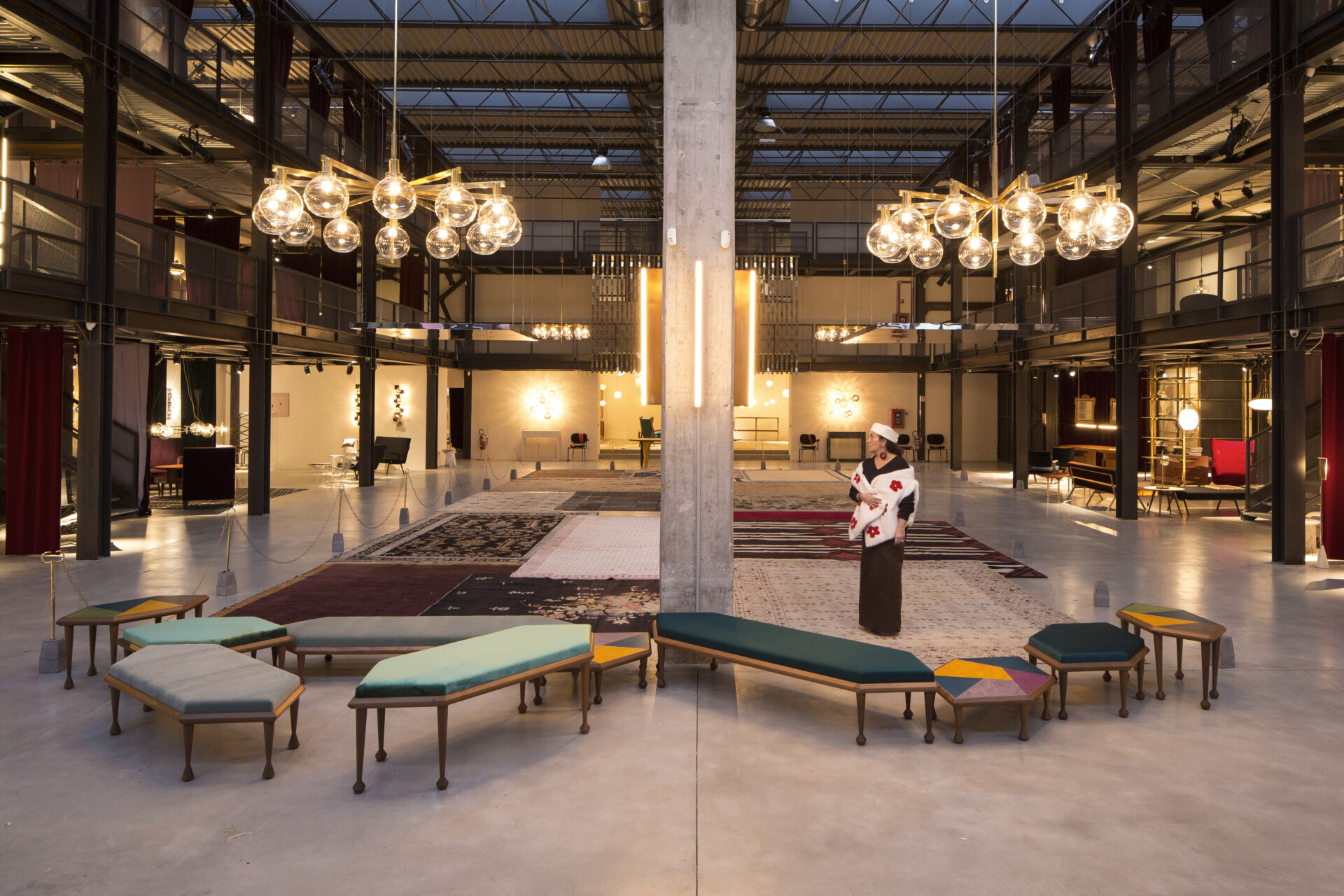
Nina Yashar at Nifular Gallery; Photo by Mattia Iotti
Indeed, digital technology is revolutionizing the world of collectable design. Who’s scared? Not Yashar, who believes in the power of traditional craftsmanship. “The artisan’s hand brings a sense of humanity and authenticity that no machine can replicate,” she insists. While technology can enhance design, she believes that the “hand” of the designer and the creator is irreplaceable. “Observing the artisan’s imprint in an object reminds us of the beauty in imperfection and the profound depth of human creativity.” This is, perhaps, one of the reasons why she remains drawn to mid-century and modern design objects. “They challenge conventions while remaining timeless,” she says. “There’s a captivating balance of innovation and elegance, offering designs that continue to inspire.”
From Milan to Morocco to the Middle East, and far beyond, Nina Yashar continues to shape the way humans experience design, reminding us that it’s perfectly acceptable to get emotional over an armchair. It’s all about connection, she says. And when you find the right piece, you just know.

